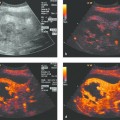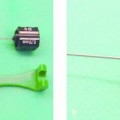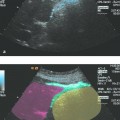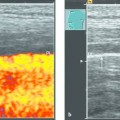Assistance in Ultrasound Interventions
10.1 Basic Principles
Ultrasound machines have a long service life. Especially in the outpatient sector, where cost-containment issues may prohibit the acquisition of a new unit, service times of 10 years are not uncommon.
The maintenance of ultrasound machines should include regular cleaning of the air filters. The lighting conditions in the procedure room are a trade-off situation for assisting personnel. On the one hand, positioning the patient requires enough light to avoid damage to surrounding equipment (ultrasound machine, IV pole) and provide a clear view of the patient (drainage tubes, wounds, monitor cables, etc.). On the other hand, the procedure itself requires a darkened room with indirect lighting and spot illumination of the control panel (▶ Fig. 10.1, ▶ Fig. 10.2). Because it takes the eyes up to 2 minutes to adjust to the darkness, bright light should be avoided when one patient leaves the suite and another enters.

Fig. 10.1 The control panel of a modern ultrasound machine. (The machine should be thoroughly cleaned daily while switched off.)
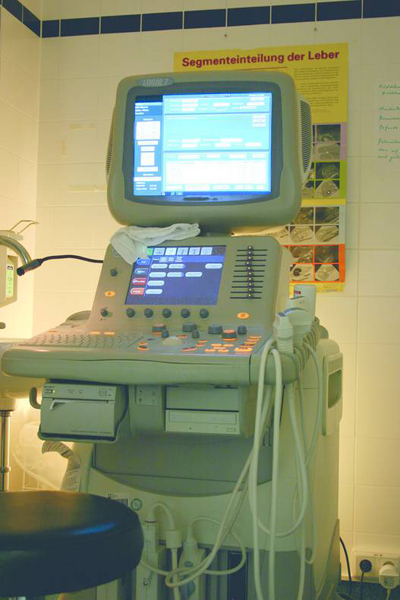
Fig. 10.2 Indirect lighting in an ultrasound examination room.
The most delicate component of the ultrasound system is the probe (transducer). When not held in the hand of an operator or assistant, the probe should be stowed in the probe holder on the ultrasound machine. A probe should not be left on the patient, bed, or stretcher where it may become damaged. The freeze button should always be pressed before the probe is cleaned. Special cleaning sprays are available that are active against bacteria, fungi, and lipophilic viruses and contain no formaldehyde or phenols (see below).
Ultrasound procedures are classified into several types:
Diagnostic ultrasound
Diagnostic interventions
Therapeutic interventions
Endosonography
10.2 Duties of Assisting Personnel
Assisting personnel should prepare the procedure room and the patient, and assist in the administration of local anesthesia, the carrying out of the procedure, provision of postprocedure care, and the early detection of possible complications. The care and maintenance of the ultrasound machine should be regulated within the department and should follow the checklist supplied by manufacturers. An external check of the machine, cables, and probes should be performed daily, however. Ultrasound probes may undergo a three-step treatment process, depending on their intended use.
Cleaning the probe The probe is unplugged from the machine and immersed in water or an enzymatic cleaning solution, always adhering to manufacturer’s instructions. The probe is then cleaned mechanically with a sponge or cloth, rinsed with water, and dried with a soft cloth.
Disinfecting the probe In this process the probe is either cleaned with a disinfectant wipe or immersed in disinfectant solution prepared according to manufacturer’s instructions, then rinsed with sterile water and dried.
Sterilizing the probe The probe is packaged in a suitable pouch. Next, most types of probe undergo ethylene oxide gas sterilization, which is done for 3 hours at a maximum temperature of 55°C and maximum pressure of 8–200 kPa. Once again, manufacturer’s instructions should always be followed.
It has become standard practice in many departments to have assisting personnel place peripheral intravenous lines. In difficult situations, venous cannulation can even be performed under ultrasound guidance.1 European and U.S. rules differ on this matter and can be reviewed on the websites of the European Society of Gastroenterology and Endoscopy Nurses and Associates (www.ESGENA.org) and of the American Society for Gastrointestinal Endoscopy (www.ASGE.org). On the other hand, there is a core set of physician responsibilities that cannot be delegated to nonphysicians because of their technical difficulty, procedural risk, or potential for an unpredictable reaction. But as cost pressures in the health care industry continue to rise in the coming years, it is likely that policies and procedures will be revised2 and there will be a greater delegation of patient care responsibilities to assisting personnel.
10.3 Diagnostic Ultrasound
The probe used in diagnostic ultrasound is a “noncritical” medical object that comes into contact only with intact skin. The duties of assisting personnel before the actual examination include greeting the patient, checking paperwork, and preparing the examination couch. No assistance is needed during the ultrasound examination, freeing the assisting staff for other duties.3
The delegation of limited diagnostic examinations, as in “focused assessment with sonography for trauma” (FAST), has yielded very encouraging results.4 The overall accuracy of nurse-performed FAST for the detection of free fluid was 95%, with a sensitivity of 84.4% and a specificity of 98.4%. Current developments can be followed by visiting the websites of the Society of Diagnostic medical Sonography (SDMS, www.sdms.org) and the American Registry of Diagnostic Medical Sonographers (ARDMS, www.ardms.org).
Tele-ultrasound is based on the use of portal ultrasound scanners in emergency settings (Mobile Hospital Emergency Medical System, MHEMS).5 It is difficult at present to judge the future role of this technology.
10.4 Diagnostic Interventions
Biopsy results will have profound implications for most patients. A patient with a suspected tumor is naturally anxious while awaiting both the biopsy procedure and its results. It is essential, therefore, to establish an atmosphere of trust. An informed patient will be better able to cooperate during the procedure, making it less likely that problems or complications will arise (▶ Fig. 10.3).
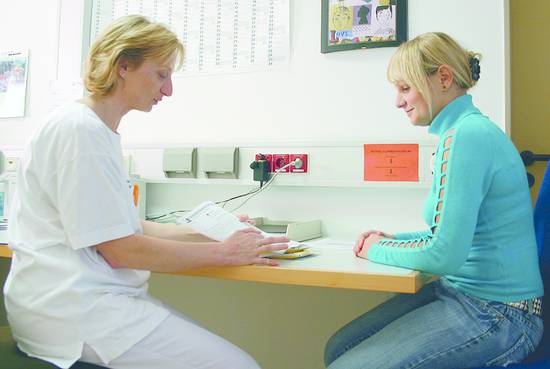
Fig. 10.3 Informed consent is obtained the day before the procedure in a calm, relaxed atmosphere.
Stay updated, free articles. Join our Telegram channel

Full access? Get Clinical Tree




